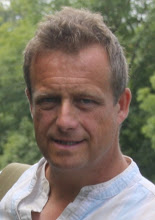
Old routes into Ormskirk from Birkdale, familial Norse settlements; routes across the old Moss, old Catholic trails marked by sandstone crosses; places of weeping and pilgrimage, modern bus routes. Winter trees, thin sunlight, low skies. The four streets of the old town, four cardinal points marking the junction of roads to Burscough, Wigan, Preston and Southport. Buried Catholic histories – the Thursday market charter was granted by Edward I to the monks of Burscough Priory in 1256, who also approved a great yearly market of five days, beginning on the Vigil for the Feast of the Beheading of St John the Baptist; invented stories, the turnings of the Church year. The Priory fell and was pillaged for its stone at the Reformation and is now just two lumpen pillars in a field, the remains of a cross-arch, an inner junction of walls, of rooms. An echo of Ozymandias, and a further Ormskirk story; Sean was given a volume of Shelley and Keats that had belonged to a girl called Alice Hurst in the 1920s, who lived on a farm outside Aughton; there were Hursts at farms in the library’s Ormskirk censuses from 1851 and 1890, but Alice would be too young, time jumps too quickly, she was buried too deeply in the archives; we ran out of research-time.
Ormskirk is a Norse name, the church of Orme, a semi-mythical Norse settler of the tenth century; imagined farms, possible histories. Orm’s Kirk. The market cross stands at a cross-roads, a meeting of hearts, a place for trade. This was a walking-day of hidden Irish stories, of the Gael settling into the British mentality, names softening into the present day; Hegarty and Kennedy, the names of women running bars in the town, an Irish lament being played on a penny whistle at the crossroads, even the curl of silver of a broken chain found and placed with reverence on a broken wall, its soft coils resembling an illustration from the Book of Kells. And in the library the names of the market traders a century ago were all Irish; Coyne, Hanlon, O’Dowd.
Sean is a good friend and an artist; photographer, writer, performer, raconteur. Sarah Murphy was Sean’s great-grandmother. He has memories of her from his childhood, when she visited the house in Ackers Road in Woodchurch. He has heard stories of her visiting the large houses in Oxton to buy or ask for old clothes, unwanted cloth; these she took apart, collecting stays and buttons, and recycled them into children’s clothes, which she sold at the market; Birkenhead, perhaps Liverpool, Ormskirk.
The station was much the same, although now is not as important; no lines any more to Southport or even Burscough. How did she get here? Changing at Liverpool Exchange for the Ormskirk line? Did she carry her wares with her, a tight roll of new-old children’s clothes, tiny coats, waistcoats for Sundays, short tweed trousers? Perhaps she rented a part of a barrow, a fifth of a stall, perhaps she had a lock-up nearby or rented an attic in the town to store her clothes. These details, this history, is lost; only the folk-memory remains of Sarah Murphy working at remodelling cloth and selling clothes on Ormskirk Market.

No comments:
Post a Comment